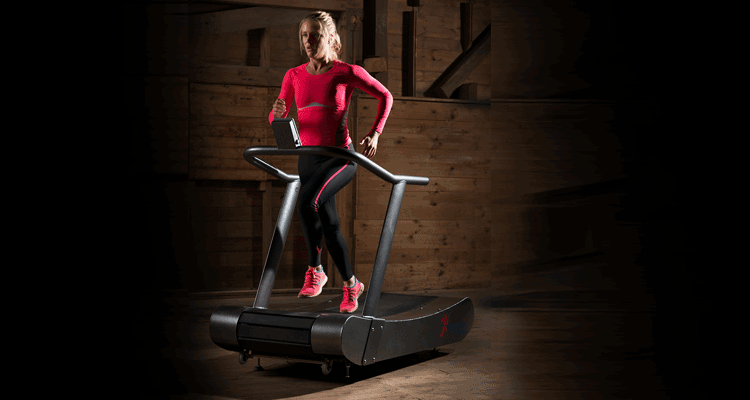Can going unplugged give you a better workout? We take a look at manual treadmills and their place in the fitness community.
No matter how you feel about the garden-variety gym treadmill (sentiment often ranges all the way from abject loathing to abiding love), there’s no denying its popularity as one of the primary go-to machines for a cardio warm-up or workout. Perhaps its reliability is what makes it popular; since its introduction in the 1960s, the recreational, motorized treadmill’s basic design has remained nearly unchanged. Sure, there have been upgrades, fancy add-ons, and high-tech features, but the general concept has remained the same: plug it in and push “Go.”
That is, until now.
Treadmills without motors, otherwise known as manual treadmills, are arguably the most eco-friendly evolution of this traditional gym staple to hit the fitness scene in years. Why? They don’t need to be plugged in. Once an athlete steps on to the machine, it simply starts moving—using nothing more than momentum—to begin the workout. The curved, rubberized conveyor belt, which sits lower in the middle and higher on either end, utilizes gravity to accelerate and brake, eliminating the need for speed buttons.
These unplugged machines, which have been popping up everywhere from fitness clubs to the CrossFit Games, are rapidly gaining traction (pun intended), likely due to the claim that they provide a more effective workout than their conventional counterparts. Woodway, one company producing these treadmills, claims that the machines force users to more actively engage their glutes and hamstrings, thus increasing calorie burn by up to 30 percent. Though this is certainly an impressive claim (at the most recent CrossFit Games, competitors reportedly found running on motorless treadmill to be grueling), A-list celebrity trainer Dan Roberts says the machines’ benefits may be a bit overstated.
“Because manual treadmills lack a motor, the leg muscles have to work a bit harder, which can improve strength and fitness. However, there is no proper evidence that supports any specific figures in regards to calorie burn,” he explains. “In fact, because manual machines currently lack [the] ability provide an incline workout, exercisers who are trying to lose fat may be at a disadvantage.” (Looking to burn fat? Your Grocery Store Is Making You Fat.)
On the other hand, road racers and running enthusiasts may find the machines beneficial. “Many athletes over-stride in an attempt to keep up with electric belts, which causes them to strike with their heel instead of their toe. This puts an enormous amount of force into the ground and up through the skeletal system,” explains Jay Cardiello, a former member of the Tampa Bay Buccaneers strength and conditioning department. “Motorless treadmills, however, encourage forefoot striking, which generates very minimal force, reducing the risk of injury.” Roberts concurs and adds that motorless machines feel more like running outdoors, which can help competitive runners prepare for races more effectively than traditional treadmills.
It remains to be seen whether manual treadmills will ever fully replace mainstream machines, but they are definitely here to stay, and quickly gaining momentum. Interested in taking one for a test run? There’s certainly no harm in that—just remember that whether or not it should replace a standard motorized treadmill workout depends largely on your personal fitness goals.
Want more advice on the best workout technology? Read on…
Fitbit Flex vs. Garmin Vivosmart – Which is Best?

